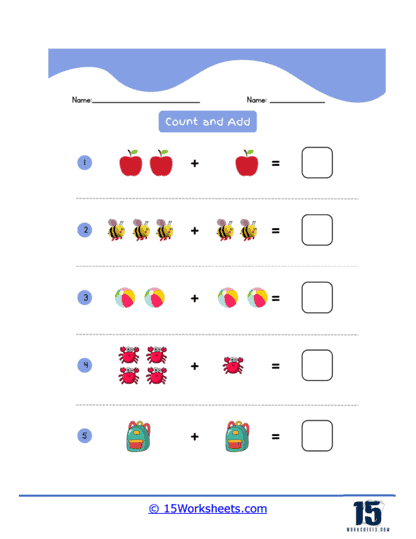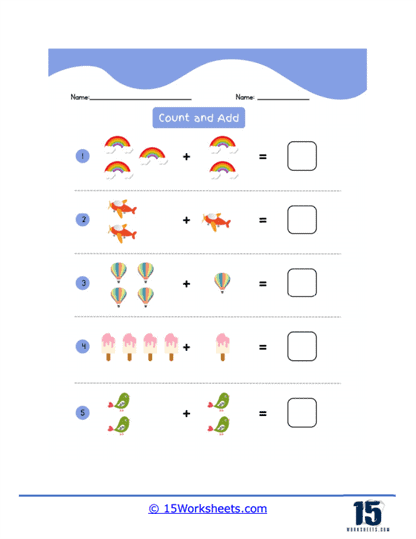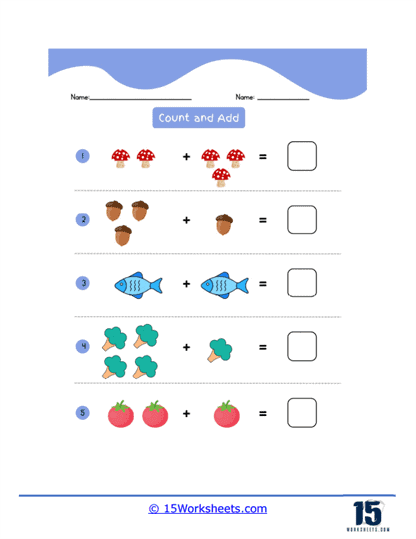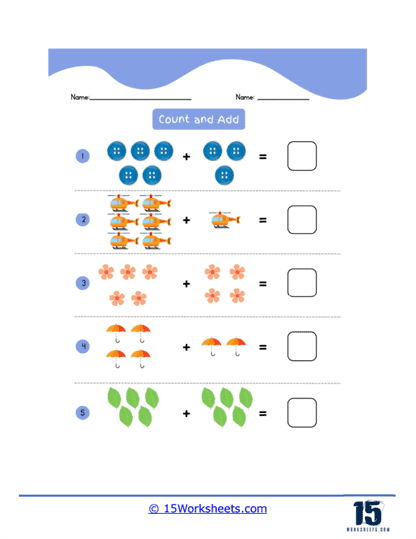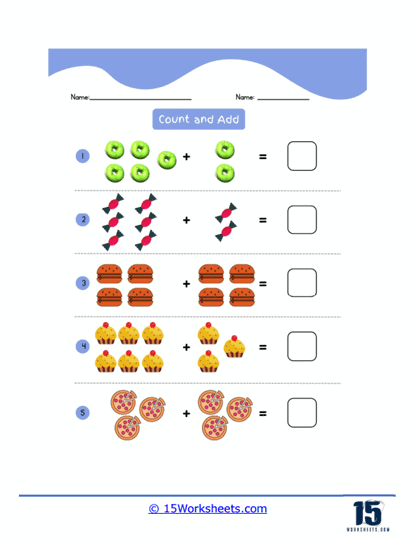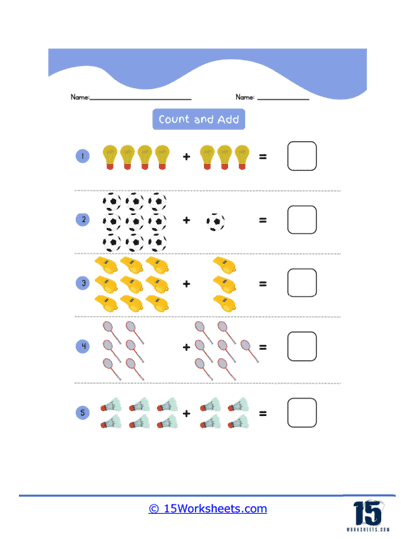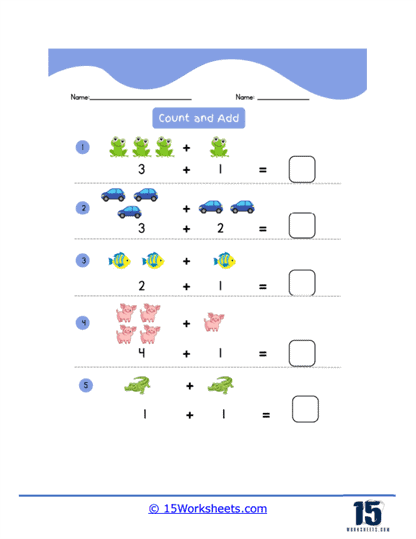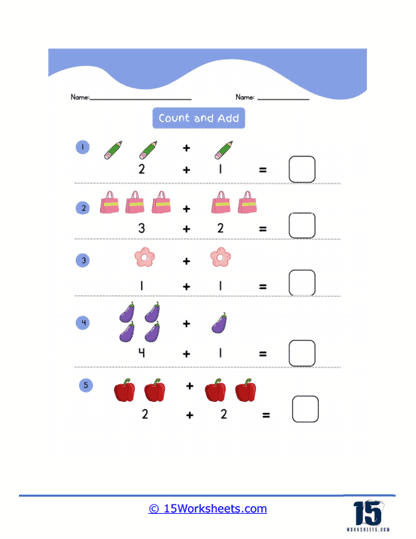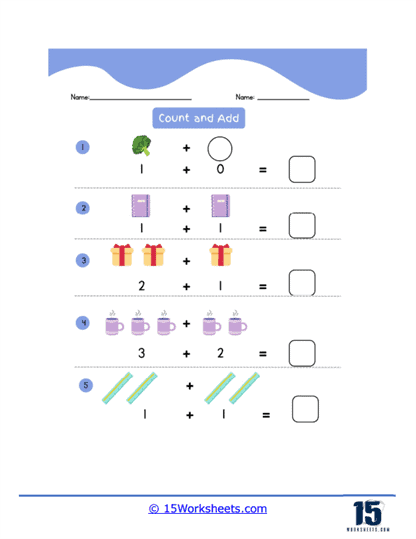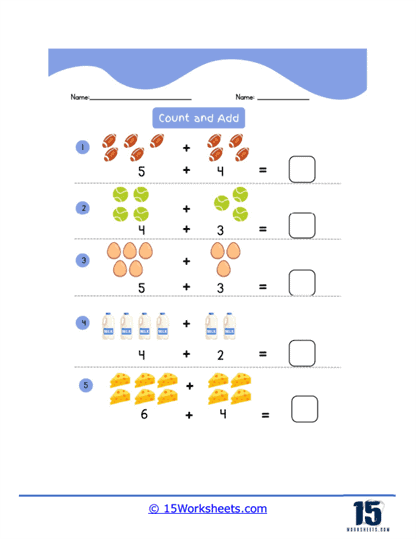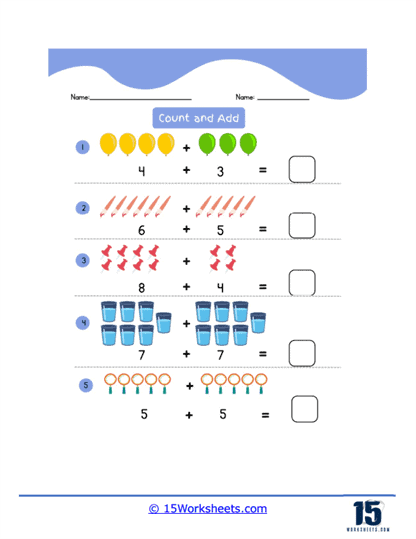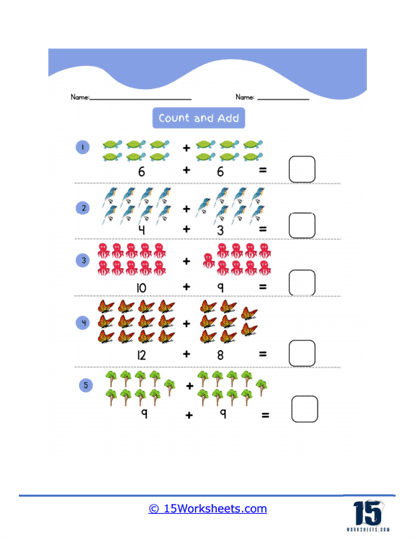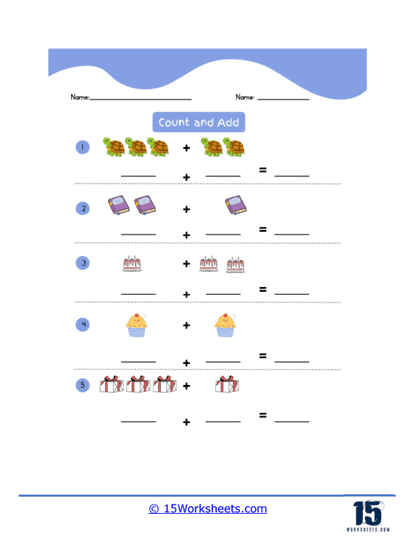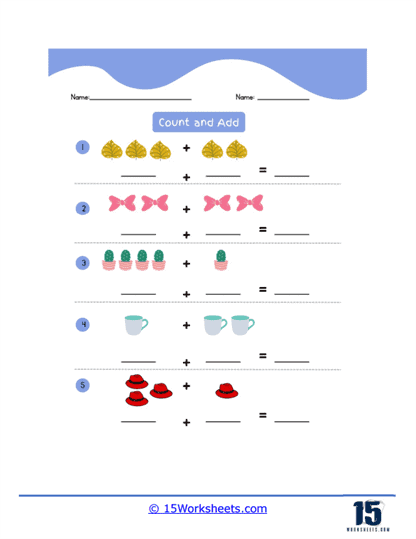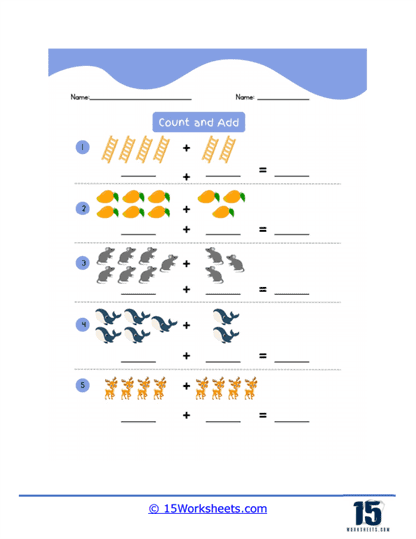Count and Add Worksheets
All About These 15 Worksheets
This series of Count and Add worksheets is an excellent resource for students who are learning to count and add in mathematics. These worksheets use pictures of physical objects, such as animals, food, and other objects in place of numbers to help students develop their counting and addition skills.
To solve the problems on the worksheets, students must first count the number of objects in each picture, and then add them together to find the total sum. The problems on the worksheets range from simple to more complex, with different numbers and objects in each picture to challenge and build upon the student’s counting and addition skills.
The worksheets also include space for students to write down their answers and show their work, allowing them to practice writing numbers and developing their basic arithmetic skills. This can help students build their confidence in addition and encourage them to work through the problems independently.
One of the benefits of using these Count and Add worksheets is that it provides students with a hands-on approach to learning addition. By using pictures of physical objects, students can develop a concrete understanding of the addition process and learn how to apply it to real-world scenarios.
Overall, this series of Count and Add worksheets is an effective tool for students who are learning addition in mathematics. By using pictures of physical objects and providing ample opportunities for practice, these worksheets can help students develop their addition skills and build a strong foundation for future mathematical concepts.
How Counting and Addition Operations Overlap
Counting is a fundamental skill that can be used as a foundation for learning to add. Here are some steps to help students use counting to learn addition:
- Understand number sequence – Ensure the student has a solid understanding of the number sequence (1, 2, 3, etc.) and can count forward and backward. This is essential for learning to add through counting.
- Start with small numbers – Begin with simple addition problems involving small numbers. For example, start with problems like 1+1, 1+2, or 2+3.
- Counting on – Teach the student the “counting on” method, where they start with the larger number in the addition problem and count up by the smaller number. For example, in 3+2, the student starts with 3 and then counts up two numbers: 4, 5. The last number counted is the sum.
- Use fingers – Encourage the student to use their fingers as a physical representation of the numbers. For example, when adding 3+2, they can hold up three fingers on one hand and two fingers on the other, and then count the total number of fingers held up.
- Use physical objects – Provide the student with manipulatives or everyday objects (such as beads, blocks, or coins) to represent the numbers being added. They can count the objects to find the sum. This helps create a visual and tactile connection to the addition process.
- Practice with number lines – Introduce number lines as a visual aid for counting. The student can start at the larger number on the number line and then move along the line by the smaller number, counting as they go, to find the sum.
- Gradually increase difficulty – As the student becomes more comfortable with counting to add smaller numbers, gradually increase the difficulty by introducing larger numbers and more complex addition problems.
- Reinforce learning with games and activities – Use games, puzzles, and activities that involve counting and addition to reinforce learning and make the process enjoyable. This can help motivate the student and improve their retention of the concepts.
- Encourage mental math – Once the student is comfortable with counting and addition, encourage them to practice mental math by finding sums without the help of physical objects or number lines.
Using counting as a basis for learning to add can help students build a strong foundation in basic arithmetic. By gradually increasing the difficulty and incorporating various methods, students can develop their addition skills and progress to more advanced mathematical concepts.

